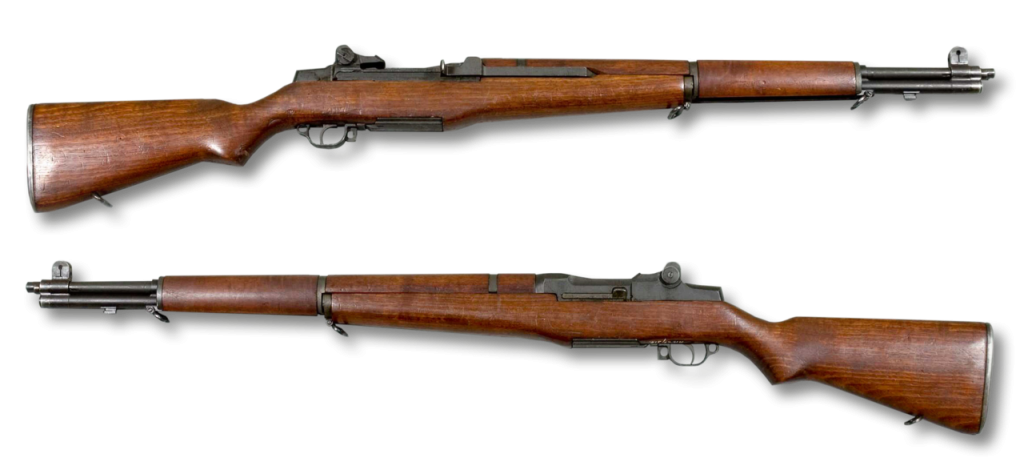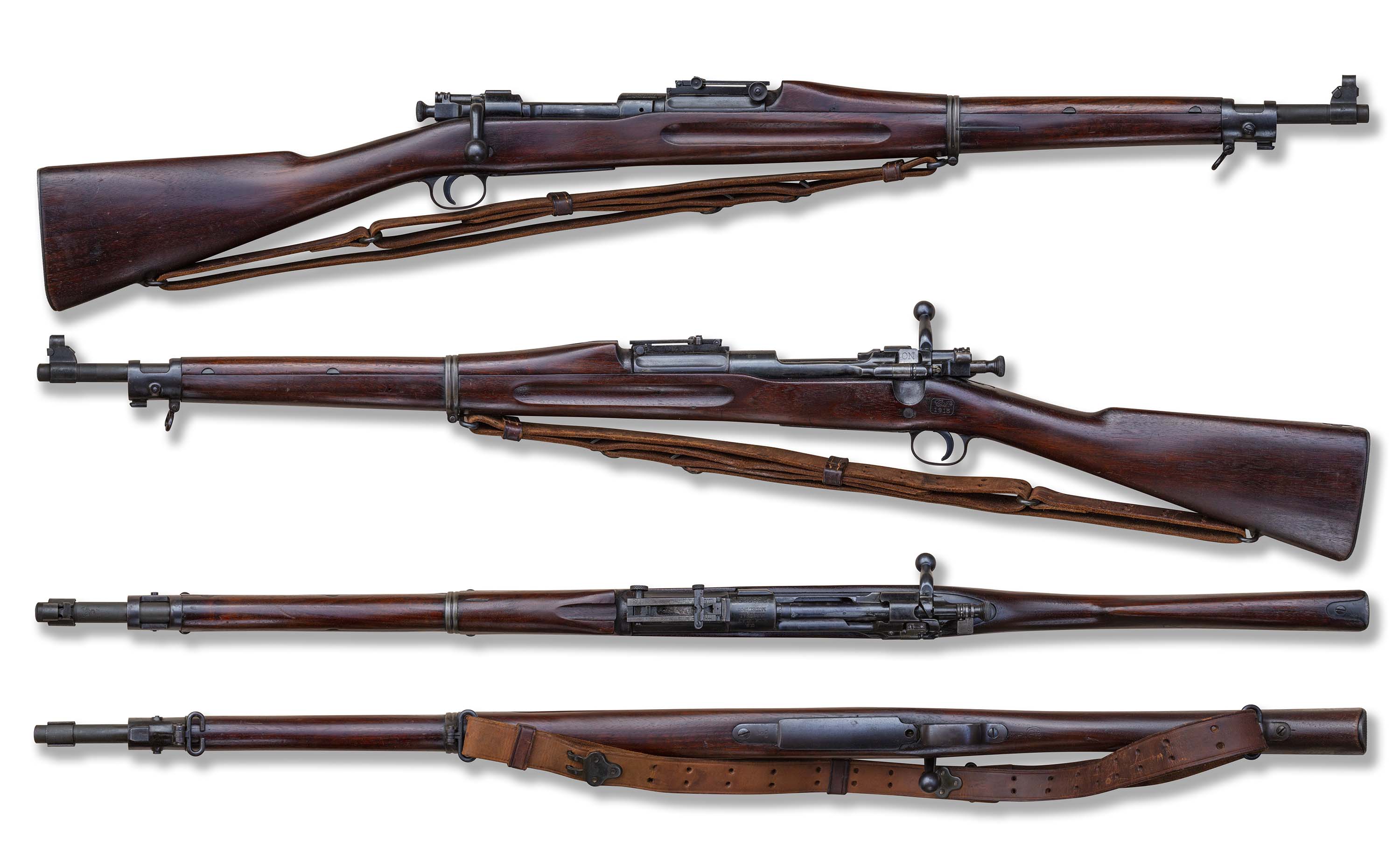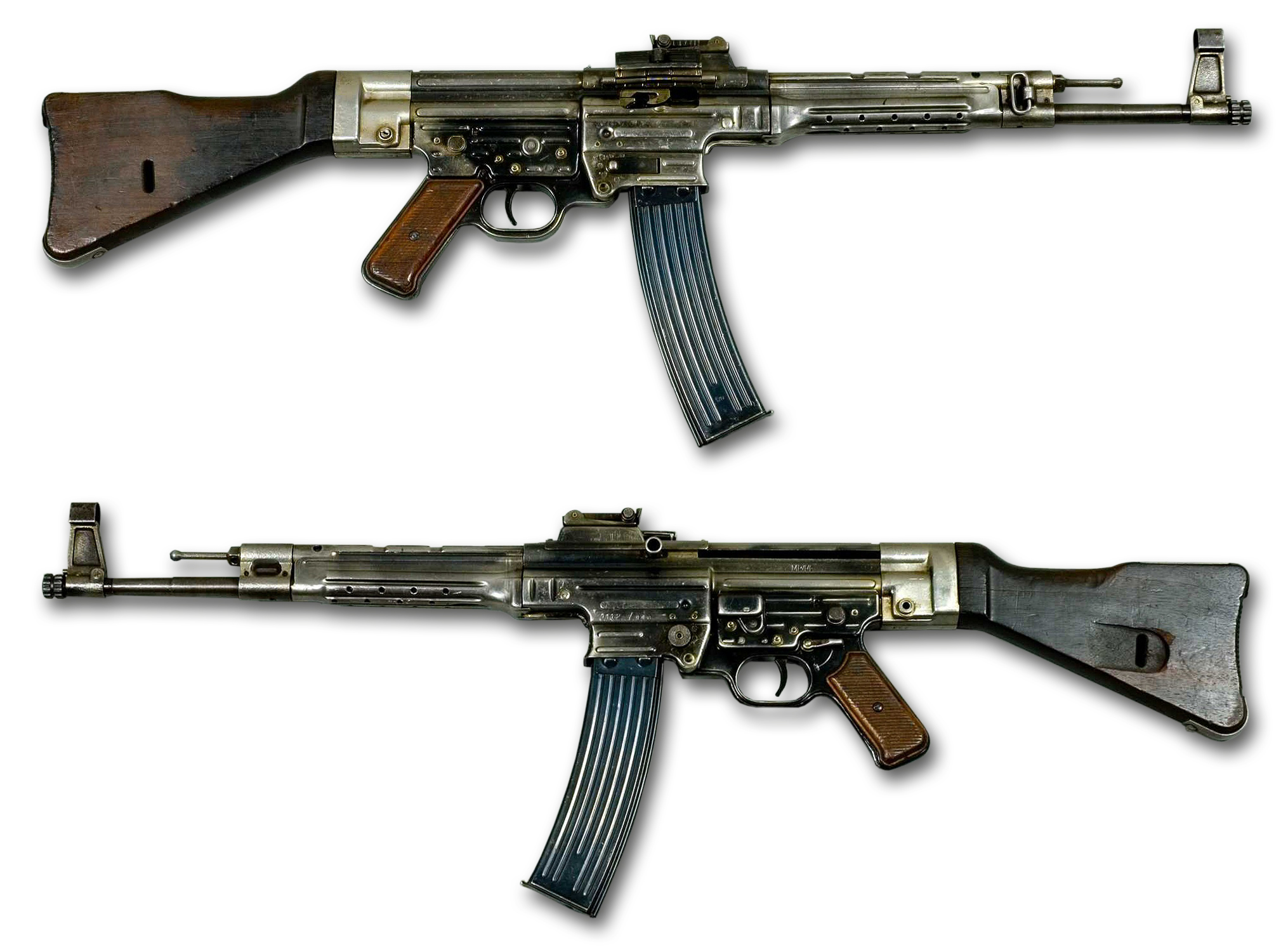
“In my humble opinion, the M-1 Rifle is the finest battle implement ever conceived.” When General George S. Patton penned those lines in January 1945, the U.S. Army’s semi-automatic M1 Garand had already revolutionized infantry warfare. But by the time his letter arrived at the War Department’s Chief of Ordnance, American soldiers were facing a German development that prefigured the rifle’s obsolescence: the Sturmgewehr 44, the first mass-produced assault rifle in the world.

1. A Jump Ahead of Bolt-Action
At a time when most troops were still equipped with bolt-action rifles sporting five-round magazines, the M1 Garand’s eight-round en bloc clip and semi-automatic mechanism granted American infantry a significant advantage. Its gas system, as firearms historian Ian Hogg explained, utilized “a gas piston beneath the barrel which operated an operating rod… rotating the bolt to open it… eject the spent case… and chamber” the next cartridge. This allowed a trained rifleman to achieve eight aimed shots in less than 20 seconds without losing sight picture an amazing rate for the 1940s battlefield.

2. Engineering the Gas System
The Garand’s first “gas trap” design, inspired by the Danish Bang rifle, trapped propellant gases at the muzzle. Field performance showed its weaknesses: carbon fouling, loose fittings, and even the occasional component blow-offs. By 1940, Springfield Armory had moved to a more powerful “gas port” system, drilling directly into the barrel to redirect gas to the operating rod. This adjustment increased accuracy, streamlined maintenance, and saved production costs important considerations as production jumped to well over four million rifles during WWII.

3. Patton’s Praise in Context
Patton’s now-famous phrase was only half of a larger recommendation: “Our machine guns, mortars, artillery, and tanks are without equal… In the hands of the unconquerable veterans… the utter destruction of the armed forces of our enemies is certain.” His letter was as much diplomacy between branches and an exercise in morale as it was a defense of the M1. Nevertheless, for a general who had witnessed the shortcomings of previous Springfields, the Garand’s ruggedness, accuracy, and rate of fire deserved superlatives.

4. Ammunition: Power with Limits
Carrying .30-06 Springfield ammunition, the M1 was built to operate within pressures of about 50,000 PSI. Numerous contemporary hunting loads particularly 180-grain bullets and slow-burning powder can do better at the risk of bent operating rods or receiver damage. Safe use today relies on employing loads such as M2 Ball replicas or contemporary M1-specific loads like Freedom Munitions 168-grain A-Max or Winchester’s 150-grain FMJ that duplicate original gas system specifications. A few shooters install vented gas plugs to relieve excess pressure, lengthening the service life of such 80-year-old rifles.

5. Battlefield Impact and Limitations
From Tunisia’s deserts to Okinawa’s coral crests, the Garand performed well in mud, sand, and snow. Its .30-06 cartridge could pierce cover and even multiple opponents in close jungle combat. But by late 1944, the German StG44 showed a different model: controllable automatic fire with an intermediate cartridge, tuned for 200–600 feet ranges where most engagements took place. Although the Garand surpassed bolt-actions, it couldn’t equal the StG44’s rates of suppressive fire.

6. The StG44 and the Assault Rifle Revolution
The StG44’s 7.92×33mm Kurz cartridge combined recoil and lethality, supplying a 30-round magazine in a select-fire, gas-operated system. Its very design directly impacted postwar creations; Soviet designers examined captured specimens while developing the AK-47. Although controversy continues regarding Hugo Schmeisser’s contribution to Soviet design, the StG44 represented the transition from full-power battle rifles like the M1 to reduced-weight, higher-capacity assault rifles a transition the U.S. would not embrace until the adoption of the M16 some twenty years later.

7. Postwar Service and Evolution
The Garand soldiered on in Korea, where production resumed, and into early Vietnam in sniper and ceremonial capacities. The M14, a virtually upgraded Garand with a 20-round detachable magazine and selective fire, replaced it in 1957, but soon yielded to the lighter 5.56mm M16. Nonetheless, over five million M1s had been produced, and most were furnished to allied countries from Greece to South Korea.

8. A Collector’s Icon
Nowadays, the M1 Garand sells for high dollars to collectors and tournament shooters. Its historical prestige has been enhanced by movies, television, and computer games, but these have also helped spread myths including that it is impossible to “top off” the clip. In fact, a partially full clip could be dropped and reloaded. For reenactors and drill teams, its balance and walnut stock make it as much a visual presence as it is a mechanical one.
The M1 Garand’s history is one of engineering insight catching up with tactical need for its day only to be eclipsed by a new generation of firearm that reshaped infantry firepower. Its legacy is assured, not only as Patton’s “greatest battle implement,” but as the transition between the bolt-action of the past and the assault rifle future.


